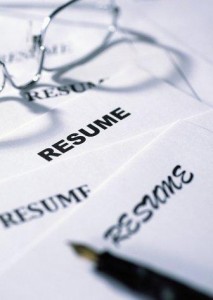The Modern Resume

Over my last five years working in a career center, I have seen some dynamic changes in the way people look for work. From the explosion of social media and social networking to the way that people work; numerous changes have taken place. Students have the opportunity to add new and creative means to their job search process in this day and age.
Websites like LinkedIn and VisualCV allow the job seeker to market themselves in new and unique ways, including the fact that one can centralize things like references, work samples, and discussions about the industry. Sites like these as well as Twitter, Facebook and many others allow one to connect to people that can connect them to jobs. Back in October, LinkedIn had 50 million users yet now only 7 months later they claim that they have 65 million users. That’s a 30% increase in only 7 months!
However, one thing that has remained constant is the fact that most everybody still needs a resume to find work. While the fact remains that you need a resume, I have seen some shifts and changes in the way that one can put a resume together. I have always viewed the resume like a piece of prime real estate and therefore put much time and thought into what is on it.
Here are four simple changes I have seen over the last few years as well heard from employers in regards to students’ resumes.
1. One and done?
While many employers still strongly suggest that a resume remain at one page for students, many others are softening their stance on that. With most resumes being submitted electronically, it is much easier for someone to scan a resume that is more than one page via email, etc.
A word of caution is that if you decide to take your resume to 1.5 or 2 pages, it should have relevant information. What I am hearing from employers is that if you have content relevant to the job and are trying to cram the information into one page, then consider adding a second page.
2. Link me!
With the advent and popularity of social networking sites like LinkedIn, more and more people are becoming accustomed to seeing a resume with some links embedded into it. This allows you to take a static document and make it more dynamic by providing links to additional information. A few examples of adding linked information to your resume include linking to your:
- LinkedIn, Twitter, Facebook account
- Professional web site or portfolio
- Past work experiences by providing a link to former/current company
- Work samples, special mentions online (i.e. being mentioned in a school newspaper, guest posting on a blog, having positive mention online)
3. What’s your objective?
The objective statement is something that seems to get varied responses from the employers that I speak to. Some say that a targeted objective statement helps them to identify the position that you are applying for while others say that it is limiting or irrelevant.
More and more I hear that employers want a summary or profile section at the top of your resume that highlights key skills. This is very common on a seasoned professional’s resume, however students can employ this as well. Think about what your top 3-5 skills and attributes are that are relevant to the job you seek.
4. Hit the target!
Now more than ever it is essential to target a resume to the individual needs of the job that you are applying for. I have had some recruiters at large organizations tell me that if they can’t tell how a candidate fits into their organization within a 10 second scan of a resume they stop reading.
Your job is to make an impact quickly on your audience with your resume and the best way to do that is by targeting the information on your resume to the specific needs of the job. Essentially, the more effort you put into showing an employer how you can contribute to their organization, the better you will be received.
While the way that we work has changed, the way that we find work has changed as well. Finding a job is more of an art than an exact science so no matter what you read or hear, the best thing to do is to network and speak to people that are in your field as well as your school’s career center.
[This post was originally written for the Student Branding Blog.]